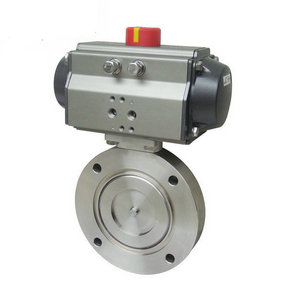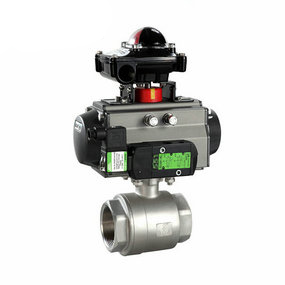Can the pneumatic cast steel flange butterfly valve be opened manually? The improvement of metal hard seal pneumatic ball valve Under the working conditions of high temperature, high pressure, high flow rate, severe erosion and corrosion, and high strength granular media, hard seal pneumatic ball valve is often used, but this kind of valve has low service life, large leakage, and short warranty period. Our company has studied a kind of erosion resistant ultra hard sealing pneumatic ball valve, and proposed a series of hard sealing pneumatic ball valves with a new concept of high quality, high grade travel, erosion resistance and long warranty period.

What are the installation requirements of pneumatic butterfly valve
1. Before installation, check that all parts of the pneumatic butterfly valve are free of missing parts, correct models, sundries in the valve body, and blockage in the solenoid valve and silencer.
2. Place the valve and cylinder in the closed state.
3. Hit the cylinder onto the valve (the installation direction can be parallel or vertical to the valve body), and then check whether the screw hole is aligned without too much deviation. If there is a little deviation, rotate the cylinder body a little, and then tighten the screws.
4. After installation, the pneumatic butterfly valve shall be commissioned (the air supply pressure is 0.4~0.6MPa under normal conditions). During commissioning, the solenoid valve must be opened and closed manually (it can be effective only after the solenoid valve coil is de energized), and the opening and closing of the pneumatic butterfly valve shall be observed. If it is found during commissioning and operation that the valve has some difficulty at the beginning of the opening and closing process, and then it is normal, it is necessary to reduce the stroke of the cylinder (adjust the stroke adjusting screws at both ends of the cylinder a little inward at the same time, and when adjusting, it is necessary to run the valve to the open position, and then turn off and adjust the air source again) until the valve opens and closes smoothly without leakage. It should also be noted that the adjustable silencer can adjust the opening and closing speed of the valve, but it should not be too small, otherwise the valve may not act.
5. The DFA shall be kept dry before installation and shall not be stored in the open air.
6. Before installing the butterfly valve, check the pipeline to ensure that there is no welding slag and other foreign matters in the pipeline.
7. The manual opening and closing resistance of the butterfly valve body is moderate, and the torque of the butterfly valve matches the torque of the selected actuator.
8. The flange specification for butterfly valve connection is correct, and the pipe clamp flange is consistent with the butterfly valve flange standard. It is recommended to use special flange for butterfly valve, and flat welding flange is not allowed.
9. Confirm that the flange welding is correct. Do not weld the flange after the butterfly valve is installed to avoid scalding the rubber parts.
10. The installed pipe flange shall be aligned with the butterfly valve.
11. Install all flange bolts and tighten them by hand to confirm that the butterfly valve is aligned with the flange, and then carefully open and close the butterfly valve to ensure flexible opening and closing.
12. Fully open the valve, use a wrench to tighten the bolts in a diagonal sequence, without washers. Do not tighten the bolts too tightly to prevent serious deformation of the valve ring and excessive opening and closing torque.




